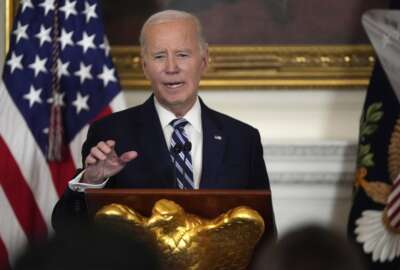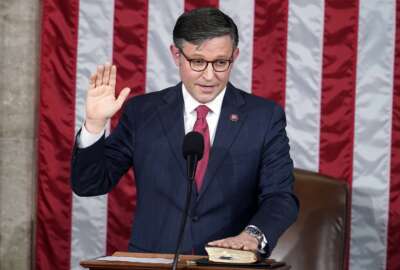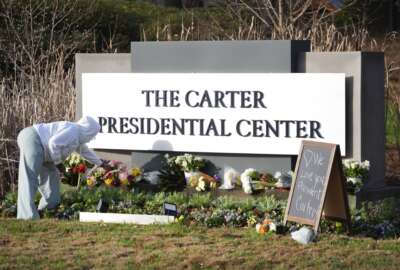Oklahoma struggles to pay for schools after slashing taxes
Four years ago, Oklahoma's oil patch was booming, unemployment was falling and lawmakers were seeking big tax cuts
OKLAHOMA CITY (AP) — Four years ago, Oklahoma’s oil patch was booming, unemployment was falling and state lawmakers were debating what to do with $200 million in surplus revenue.
Republicans who control state government successfully pushed to reduce the state’s top income tax rate, slash the oil and gas production tax rate from 7 percent to 2 percent and give more tax incentives to industry.
But the boom ended and the money dried up. Now the once-unwavering confidence in the wisdom of lower taxes has given way to a growing panic over how to pay for basic services such as schools, health care and public safety. Revenue has fallen about 20 percent short of budgeted needs for the third year in a row.
The situation has deteriorated to the point where highway patrol troopers have been warned not to fill their fuel tanks, and drunken drivers have been able to keep their licenses because there are not enough administrative workers to revoke their driving privileges. Nearly 100 of the state’s 513 school districts have moved to four-day weeks.
Oklahoma’s woes are intensifying just as President Donald Trump’s administration proposes its own ambitious plan to slash corporate and personal taxes. The White House insists the overhaul will spur economic growth and bring prosperity to the middle class, but the idea alarms lawmakers worried about the risk of ballooning federal deficits.
State legislators have already tried cutting the budget. Overall, last year’s inflation-adjusted budget of $6.9 billion was 11 percent less than 2009, according to a recent analysis.
But the spending cuts so far have not been enough to close a projected $900 million gap. Lawmakers are weighing drastic steps such as reducing Medicaid payments, which officials say could cause hundreds of nursing homes to close.
“We’re not running the state based on a plan and a strategy. We’re trying to operate it on a philosophy,” said State Auditor and Inspector Gary Jones, a former Oklahoma Republican Party chairman who’s among a growing number of Republicans and Democrats calling for an about-face. “It seems like we’re afraid to admit we’ve made mistakes and correct them.”
It’s not clear that some in Oklahoma’s GOP are ready to see taxes as a two-way street. The party holds more than three quarters of the Legislature’s seats.
“I think we need to … make sure we’ve squeezed every nickel, dime and penny out of every corner that we can before we just start raising taxes,” said Republican Mike Schulz, the Senate leader.
Oklahoma isn’t the only red state in tax-cut distress. Lawmakers in GOP-led Kansas, Indiana, Missouri and Mississippi are debating ways of raising more revenue to ease budget problems. In neighboring Arkansas, where Republicans recently won control of the statehouse, GOP leaders approved a more modest tax cut proposal than many conservatives wanted.
It’s difficult to pinpoint whether a specific tax cut leads to economic growth, but lowering the tax burden can sometimes spur the economy, said Nicole Kaeding, an economist for the Tax Foundation, a Washington, D.C.-based research group.
She cited North Carolina as a state that cut individual and corporate tax rates while expanding the sales tax base.
However, she said, tax revenue “is just one side of the equation. If you just cut tax revenue but don’t cut spending, the state of course is going to have a budget issue.”
The situation in Oklahoma is particularly dire because the state relies so heavily on the volatile oil and gas industry, which accounts for 13 percent of overall state earnings. Also, term limits regularly send a fresh crop of newly elected GOP officeholders to the Capitol eager to redeem their campaign promises on lower taxes.
Schools, which receive half of state-appropriated funds, are feeling the brunt of the shortfall. The Tulsa district is proposing to close four schools and scrap some sports programs. The state and regional science fairs were listed for elimination until a private donor came forward with a $50,000 check. Teachers have not received a raise since 2008.
Many state agencies have had their budgets cut by 40 percent over the last three years.
When many red states cut taxes in recent years after Republicans made sweeping gains in the 2010 election, their leaders anticipated that any revenue loss would be temporary.
“There’s been this persistent argument that if we cut taxes, the economy will grow enough to make up for the lost revenue, and it just simply doesn’t happen,” said economist Mickey Hepner, the dean of the University of Central Oklahoma’s College of Business.
Republican Gov. Mary Fallin stands by Oklahoma’s 2014 individual income tax cut, which eliminated $135 million in annual revenue. She is now calling for tax hikes on cigarettes, fuel and a wide assortment of services to compensate.
“I’ve given a lot of different solutions for our Legislature to consider,” she said. But no revenue proposals have advanced yet.
So far, Fallin and other Republicans have avoided paying a political price for the problems. Many lawmakers count on support from conservative voters who believe that government can always be smaller.
“I think if we looked at any government agency, there’s fat that can be trimmed, and that includes the schools,” said Zane Grider, manager of a car dealership in Newcastle whose two kids now attend school just four days a week. “If we ran our business the way the government tries to run things, we’d all be broke.”
Democrats say they believe many are growing weary of the annual budget crisis.
Residents “are waiting for leaders in this building to step up and lead,” said House Democratic Leader Rep. Scott Inman, a Democratic candidate for governor in 2018. “The Republican majority, the governor and lieutenant governor, have failed to do so.”
___
Follow Sean Murphy at www.twitter.com/apseanmurphy .
Copyright © 2025 Federal News Network. All rights reserved. This website is not intended for users located within the European Economic Area.





